The Ampere Altra Review: 2x 80 Cores Arm Server Performance Monster
by Andrei Frumusanu on December 18, 2020 6:00 AM EST- Posted in
- Servers
- Neoverse N1
- Ampere
- Altra
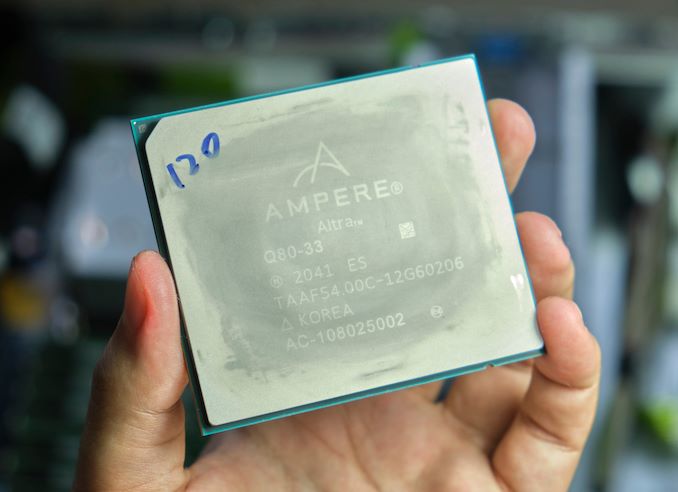
As we’re wrapping up 2020, one last large review item for the year is Ampere’s long promised new Altra Arm server processor. This year has indeed been the year where Arm servers have had a breakthrough; Arm’s new Neoverse-N1 CPU core had been the IP designer’s first true dedicated server core, promising focused performance and efficiency for the datacentre.
Earlier in the year we had the chance to test out the first Neoverse-N1 silicon in the form of Amazon’s Graviton2 inside of AWS EC2 cloud compute offering. The Graviton2 seemed like a very impressive design, but was rather conservative in its goals, and it’s also a piece of hardware that the general public cannot access outside of Amazon’s own cloud services.
Ampere Computing, founded in 2017 by former Intel president Renée James, built upon initial IP and design talent of AppliedMicro’s X-Gene CPUs, and with Arm Holdings becoming an investor in 2019, is at this moment in time the sole “true” merchant silicon vendor designing and offering up Neoverse-N1 server designs.
To date, the company has had a few products out in the form of the eMAG chips, but with rather disappointing performance figures - understandable given that those were essentially legacy products based on the old X-Gene microarchitecture.
Ampere’s new Altra product line, on the other hand is the culmination of several years of work and close collaboration with Arm – and the company first “true” product which can be viewed as Ampere pedigree.
Today, with hardware in hand, we’re finally taking a look at the very first publicly available high-performance Neoverse based Arm server hardware, designed for nothing less than maximum achievable performance, aiming to battle the best designs from Intel and AMD.
Mount Jade Server with Altra Quicksilver
Ampere has supplied us with the company’s server reference design, dubbed “Mount Jade”, a 2-socket 2U rack unit sever. The server came supplied with two Altra Q80-33 processors, Ampere’s top-of-the-line SKU with each featuring 80 cores running at up to 3.3GHz, with TDP reaching up to 250W per socket.
The server was designed with close collaboration with Wiwynn for this dual socket, and with GIGABYTE for the single socket variant, as previously hinted by the two company’s announcements of leading hyperscale deployments of the Altra platforms. The Ampere-branded Mount Jade DVT reference motherboard comes in a typical server blue colour scheme and features 2 sockets with up to 16 DIMM slots per socket, reaching up to 4TB DRAM capacity per socket, although our review unit came equipped with 256GB per socket across 8 DIMMs to fully populate the chip’s 8-channel memory controllers.
This is also our first look at Ampere’s first-generation socket design. The company doesn’t really market any particular name to the socket, but it’s a massive LGA4926 socket with a pin-count in excess of any other commercial server socket from AMD or Intel. The holding mechanism is somewhat similar to that of AMD’s SP3 system, with a holding mechanism tensioned by a 5-point screw system.
The chip itself is absolutely humongous and amongst the current publicly available processors is the biggest in the industry, out-sizing AMD’s SP3 form-factor packaging, coming in at around 77 x 66.8mm – about the same length but considerably wider than AMD’s counterparts.
Although it’s a massive chip with a huge IHS, the Mount Jade server surprised me with its cooling solution as the included 250W type cooler only made contact with about 1/4th the surface area of the heat spreader.
Ampere here doesn’t have a recessed “lip” around the IHS for the mounting bracket to hold onto the chip like on AMD or Intel systems, so the actual IHS surface is actually recessed in relation to the bracket which means you cannot have a flat surface cooler design across the whole of the chip surface.
Instead, the included 250W design cooler uses a huge vapour chamber design with a “pedestal” to make contact with the chip. Ampere explains that they’ve experimented with different designs and found that a smaller area pedestal actually worked better for heat dissipation – siphoning heat off from the actual chip die which is notably smaller than the IHS and chip package.
The cooler design is quite complex, with vertical fin stacks dissipating heat directly off the vapour chamber, with additional large horizontal fins dissipating heat from 6 U-shaped heat pipes that draw heat from the vapour chamber. It’s definitely a more complex and high-end design than what we’re used to in server coolers.
Although the Mount Jade server is definitely a very interesting piece of hardware, our focus today lies around the actual new Altra processors themselves, so let’s dive into the new Q80-33 80-core chip next.


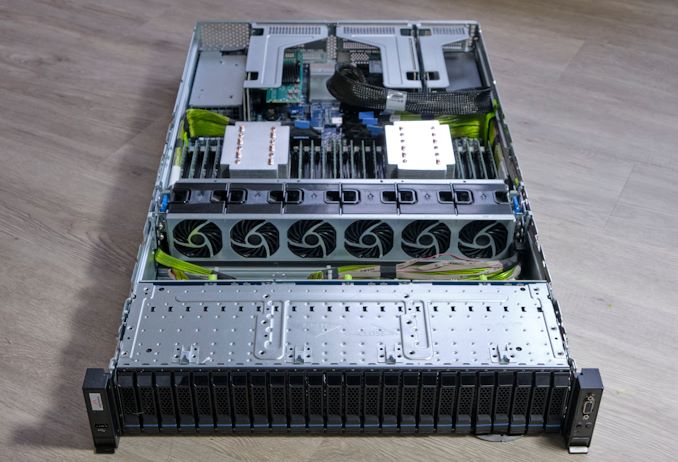
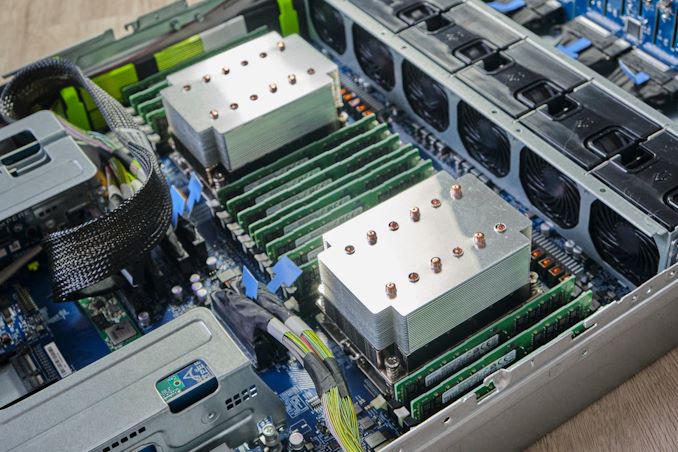
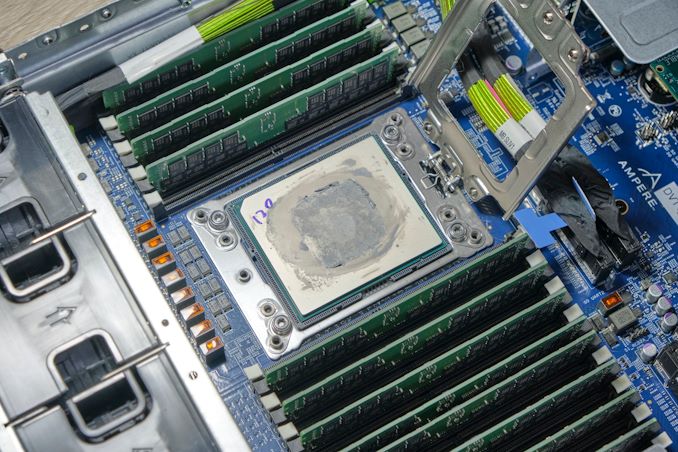
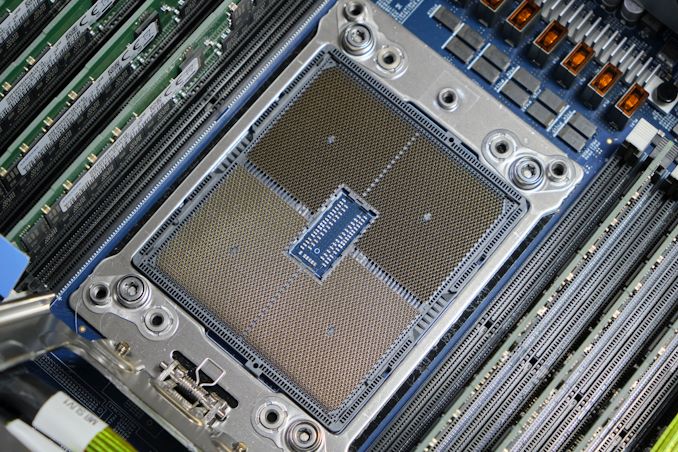
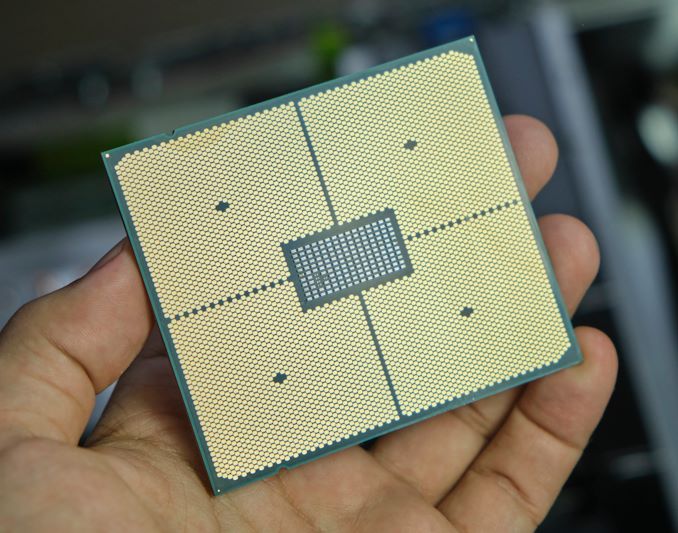

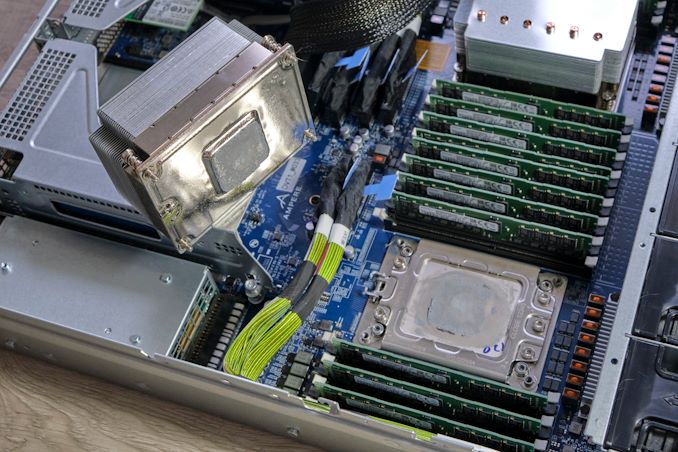
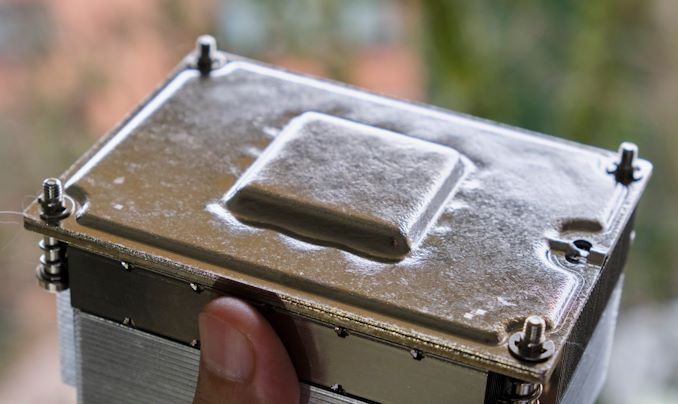
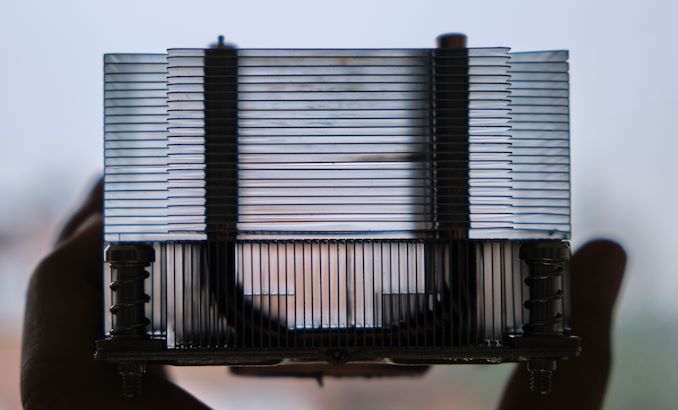








148 Comments
View All Comments
mode_13h - Thursday, December 31, 2020 - link
Isn't Blender included in SPECfp2017 as 526.blender_r? Or is that something different?Teckk - Friday, December 18, 2020 - link
Whoever decided on naming these products — fantastic job. Simple, clear and effective.Maybe you can offer some free advice to Intel and Sony.
Calin - Friday, December 18, 2020 - link
The answer to the question of "how powerful it is" is clear - more than good enough.The real question in fact is:
"How much can they produce?"
AMD has the crown in x86 processor performance, but this doesn't really matter very much as long as they can build enough processors only for a part of the market.
jwittich - Friday, December 18, 2020 - link
How many do you need? :)Bigos - Friday, December 18, 2020 - link
64kB pages might significantly enhance performance on workload with large memory sets, as the TLB will be up to 16x less used. On the other hand, memory usage of the Linux file system cache will also increase a lot.Would you be able to test the effect of 64kB vs 4kB page size on at least some workloads?
Andrei Frumusanu - Friday, December 18, 2020 - link
It's something that I wanted to test but it requires a OS reinstall / kernel recompile - I didn't want to get into that rabbit hole of a time sink as already spent a lot of time verifying a lot of data across the three platforms over a few weeks already.arnd - Friday, December 18, 2020 - link
I'd love to see that as well. For workloads that use transparent huge pages, there should not be much difference since both would use 2MB huge pages (512*4KB or 32*64KB), plus one or more even larger page sizes, but it needs to be measured to beThe downsides of 64KB requiring larger disk I/O and more RAM are often harder to quantify, as most benchmarks try to avoid the interesting cases.
I've tried benchmarking kernel compiles on Graviton2 both ways and found 64kB pages to be a few percent faster when there is enough RAM, but forcing the system to swap by limiting the total RAM made the 64kB kernel easily 10x to 1000x slower than the 4kB one, depending on the how the available memory lined up with the working set.
abufrejoval - Friday, December 18, 2020 - link
Thank you for the incredible amount of information and the work you put into this: Anandtech's best!Yet I wonder who would deploy this and where. The purchasing price of the CPU would seem to become a rather miniscule part of the total system cost, especially once you go into big RAM territory. And I wonder if it's not similar with the energy budget: I see my larger systems requiring more $ and Watts on RAM than on the CPUs. Are they doing, can they do anything there to reduce DRAM energy consumption vs. Intel/AMD?
The cost of the ecosystem change to ARM may be less relevant once you have the scale to pay for it, but where exactly would those scale benefits come from? And what scales are we talking about? Would you need 100k or 1m servers to break even?
And what sort of system load would you have to reach/maintain to have significant energy advantages vs. x86 iron?
Do they support special tricks like powering down quadrants and RAM banks for load management, do they enable quick standby/actvation modes so that servers can be take off and on for load management?
And how long would the benefits last? AMD has demonstrated rather well, that the ability to execute over at least three generations of hardware are required to shift attention even from the big guys and they have still all the scaling benefits the x86 installed base provides.
These guys are on a 2nd generation product, promise 3rd but essentially this would seem to have the same level of confidence as the 1st EPIC.
askar - Friday, December 18, 2020 - link
Would you mind testing ML performance, i.e. python's SKLearn library classes that can be multithreaded (random forest for example)?mode_13h - Sunday, December 20, 2020 - link
MLPerf?